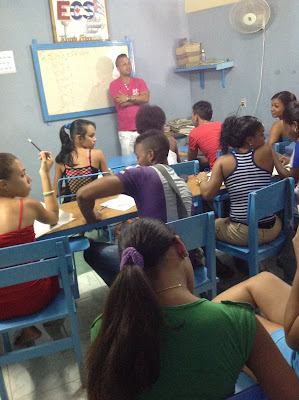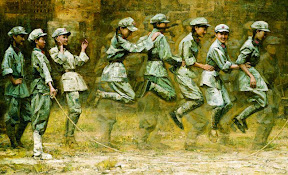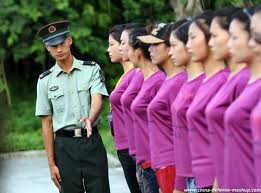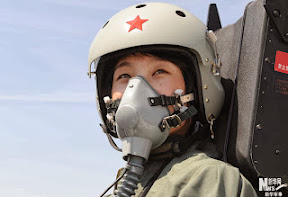My posts now appear here in descnding chronological order. I posted about August 11 today, and it now appears at the bottom of this post as it should. I also began posting my Santiago De Cuba Diary 2 above. I'm afraid I've been a little late in keeping up with posting my blogs but life is happening here faster than I can do so and I'm pretty much always doing something or other all the time! I hope the new chronological order makes it easier to read.
Tuesday August 9
Day two in Santiago de Cuba. I arrived at lunch and had to wait about an hour for my room which was okay. I got an internet card and made sure the Wi-Fi works here in the lobby of the Melia Santiago Hotel. It does, but it is pretty slow. This is still something new down here, two years ago when I visited nada.
So I unpacked and had a wonderful siesta in my 8th floor room. What a view! I can look out my window at the Sierra Madre mountain range surrounding the city. Below is Reparto Sueno, the neighbourhood of dreams. It's a sleepy older part of town that dates back centuries with its stone houses, tiled rooftops and sprawling tropical vegetation; quite a few varieties of palm trees, ferns and more.
There is a buzz in the air, barking dogs, honking car horns, the rumble of traffic and voices. A chorus of roosters greets the dawn in the morning across the city, and it still not uncommon to see a goat tethered out front many homes. In the back they may even have a chicken coup, or even raise a pig, for the meat. Besides providing milk and cheese, the goats also serve as a lawnmower keeping the grass short and trimmed. Pretty neat.
Of course I can close my window and just enjoy the air-conditioning. Sometimes I do, and sometimes I don’t. I quite love the natural charm of this city.
That first evening Professor Jose Luis joined me here at the hotel for a café and to begin discussing our business, and planning an itinerary. He too is a music aficionado, so I brought him an IPod Classic packed with Beatles tunes. He also especially likes Paul Anka, many of the Cubans do, I don`t quite understand the fixation but I am happy to load all his albums on too. I brought a small portable dvd player and a stack of movies. He will share these at school with the English students. It creates great interest in his classes.
I slept in this morning before going to the breakfast buffet. The food has been good. Later I made my way over to his home in the centre of the city, a leisurely half hour walk at most. His wife Marta served us a home cooked meal for lunch, very Cuban style; rice and beans, pork, avocado. I`ve been drinking gallons of fresh tropical juice; orange, mango etc. It is so good and natural, nothing like we get at home. The taste literally explodes in your mouth. It`s indescribable.
I returned to my hotel room late afternoon, walking back through the busy streets during rush hour just enjoying being there and tasting everyday life. There are more vehicles, especially motorcycles, less horse drawn carts. There is a lot of new construction and family run shops, usually a street side table with an awning selling their services or wares. Lots of fruit markets and carts. I stopped in Delores Park to listen to the street musicians play some musica Cubano traditional style. Everybody sitting about listening was very nice, and even wanted their picture taken. I tipped the band a peso and waved good bye to everyone as I made my way home for my siesta.
I had a great swim in the pool, then enjoyed the dinner buffet. Afterwards I made some business calls to set up my meetings. Jose and I will be visiting a few places tomorrow and I am planning a small conference with the group working on the Ingles Para Ti workbook at the rooftop café here at the hotel later in the evening. The workbook is now in its fifth edition, the last three on dvd, with a sixth in the planning and they would also like to use it to set up an E course in English.
August 10
I was up till midnight in the hotel lobby uploading photos and a post for my blog site. It is very slow. I hope everything posted, especially the photographs. I have taken so many. Today I enjoyed a leisurely breakfast buffet, toast, eggs, tropical fruit, coffee and juice. I happily sat alone reading a book and just enjoying my unhurried solitude. I am reading Pepys Diaries, always a pleasant diversion. His personal reflections and insights on 16th century life in London England are quite enjoyable and not without their comical asides about many of the cultural and political intrigues of the day. I quite like his style.
Afterwards, I enjoyed a nice walk downtown to the city centre taking lots of photos along the way. I’ve been here a dozen times at least so I pretty much know what to look out for. The amount of new construction, the busy stores, and multitude of street side merchants stands is a pleasant surprise. This is definitely the best I’ve seen it since 1992.
Jose’s nephew Ernesto was watching the local t.v. channel when I arrived at Jose’s house. In the morning are the children’s shows. All very upbeat with positive messaging on safety, manners, the history and culture of the island with lots of dancing, singing and animation. There was none of the sex or violence or blatant commerciality we see at home, and it is all very well done. I’ve noticed the young people seem very polite, respectful and quite frankly a delight to have around. We could learn something here from the Cubans.
Jose and I went down the street to visit Josefa and Luis. I have stayed many times at their bed and breakfast, and they too are like family to me. We were asking them about their part in the 1959 revolution. Their home was a safe house for the rebels when they came down from the mountains and were hiding in the city. They stored guns there too, and had a police radio so they could let the rebels know when there was a raid, capture or an attack pending. Many of the locals can tell such stories; it was a very local affair. Cold War history blew the revolution up into some catastrophic event but one could well argue that at the local level it was not a communist plot but rather a nationalist struggle, and most everybody I’ve met takes great pride in having done their part. We recorded some of the discussion using my iPhone movie camera. Jose would like to record everyone’s stories before they get too old and they are lost forever. Josefa and Luis are in their seventies and eighties now and quite established and respected in their own little community. Hardly communist rebels. It is amazing to consider.
Jose and I went to the travel office to look into arranging a trip to the beach, possibly for this weekend, then took a walk downtown and back towards my hotel, stopping at the Moncado barracks. A yellow fortress and armoury of sorts it is considered the birthplace of the revolution. Fidel lead an unsuccessful attack on the barracks in 1953, while still just a law student. Most of the force was killed or tortured to death. He went on trial and gave his famous “History will absolve me” speech. It is now like a shrine. You can see the bullet holes on the façade of the main building, and inside are many displays telling the history of the revolution, especially the attack on Moncado. There are guns and artillery. You see the bloodied uniforms, torture tools, graphic photos, historical documents and the like. I’ve been here before, but wanted to take some photos and just wander around awhile. Quite interesting, and they spare no punches with the graphic details.
Afterwards Jose and I parted ways. I’m back at the hotel for my siesta, a swim in the pool and then dinner. The pool is as warm as a bathtub but compared to the outdoor sun and heat it is still very refreshing. I cannot emphasize too much how hot it is here especially during the day, when even the tar on the street gets soft.
A group of the teachers are meeting with me tonight about Ingles Para Ti. I am entertaining them here. The hotel is air conditioned and it is still blistering hot outside, hot even for Santiago de Cuba, plus we have internet access in case we need to use it.
Our meeting on the rooftop deck of the Melia Santiago Hotel last night was fantastic. We watched a very traditional, if not rather risque group of Cuban dancers put on a show over a cold drink in the cabaret then stepped outside to sit and talk business.
Ingles Para Ti has been very successful and is being used for teacher instruction at the Oriente Pedagogical Institute, and in the Hospitality training schools. The workbook is now in it's 3rd edition on dvd with about 200 of them making the rounds, to be shared at the schools. Another more interactive version is in the planning stages, and I will be seeking funding for it when I return to Canada. I have asked for a full acounting of how the previous donations from OECTA/TSU and the OTF has been used, and a proposal for the next edition. I will use that, along with a dvd copy of the program to make the case.
The teachers are also keen on setting up an E program for conversational English to help Cubans better understand foreigners and exchange simple greetings and engage in simple conversations with us. There is still a lot of logistics to work out on this, and I have asked for their proposal, perhaps for a prototype version first, before I leave on Monday. It's a very interesting and exciting possibility.
It was a productive evening, sitting 15 stories up, looking out at the city lights. Nothing like Toronto, there's fewer street lights and few brightly lit commercial establishments, no business towers, mostly just some apartments and house lights. Still it was quite magical, like stars in the pitch black night and there was a very pleasant sea breeze, as pleasant as my discussions with our Cuban colleagues. And with that I will go to bed.
Wednesday August 11
I had a busy morning at the hotel doing some banking and booking an air conditioned bus trip for myself, the teachers, and a few other locals who have just been very helpful to me over the years. We will go across the mountains to Guadalavca on Saturday. There is a beautiful white sand beach which is excellent for snorkelling, and of course we can sun, talk, and I am sure they will enjoy the buffet.
Guillermo is new to our Ingles Para Ti writing team. He teaches English to a government hospitality class for students seeking employment with an English company or to work in tourism and at the resorts. His good command of the language and strong pedagogical skills will be a big help. Jose Luis’ wife Marta is helping now too. She teaches art and culture at the university and is very well versed in the history of the island. The work so far has been beyond my wildest expectations. I’m pleased to take them out to the beach for a little mini holiday to celebrate theirs commitment to the project and all their hard work. It’s not something they could afford on their own but it’s pretty cheap by our standards.
After I booked the trip I took a taxi downtown to Cespedes Parque, and walked from there to the Toronto Friendship Community School out in the barrios. I relaxed over a glass or two of ice cold Guava juice with the Guardiola family who run the school for us; it’s on the rooftop of their casa, and by all accounts doing quite well. I decided I will come back tonight and sit in on a few classes and have a talk with the teacher and students about what they need for their studies.
Coming back to the hotel mid afternoon was incredibly hot. There was live music in every doorway, and in the parks. I stopped to enjoy a woman’s group which sang very beautiful and with great rhythm and also a children’s group which is learning the traditional musical styles of Santiago de Cuba. I also bought a very nice hand made straw hat for three convertible pesos from a street vendor.
The CUC acronym for the convertible peso, which is artificially pegged to the dollar, at about par with our own right now, has become pronounced and known as the “kook”. In Canada we have “loonies” and “toonies”, and now in Cuba they have the “kook”. Fitting in that its real value is very questionable. The National Peso used by most citizens here is worth about 25 pesos to the dollar. Still there isn’t a whole lot to buy with a “kook”. Most of the services, restaraunts and trips are so reasonably priced it really doesn’t matter much. It’s an interesting footnote, as the Cubans seem to be weaning themselves off dependency on the US dollar. Their mixed economy has pretty much recovered from the Soviet collapse, and even seem poised to be take off now on their own accord, with the recent reforms, petrol from Venezula and tourism from most everywhere it seems but the US.
Later August 11
This evening I sat in on the classes at the Toronto Friendship Community School. It is still going strong! They are on reduced summer hours with four beginner classes a day until September, then they will once again offer all four levels required for the diploma. The fans we bought for the school and installed two years ago help when the doors are also left open. The school can’t afford to use the air conditioners we also provided long ago. Although they work fine the cost of electricity is too high! In the small single room concrete class we built the teacher and students are still using the old spectrum workbooks, which surprised me. They don’t have any computers but perhaps another paperbound edition might be in order. They could also use a new white board and markers. As a sign of the new prosperity, the students now can afford their own pencils and notebooks unlike in years past where these were very hard to come by indeed. I can even recall bring down suitcases full of these.
The teacher will be visiting me tomorrow night at the Melia, where it is much cooler and we will narrow down the schools needs for my next funding request in Canada, from OECTA and OTF. He has been providing ten years of hard work and dedicated service and is making excellent progress with the English language program. I can recall in 1992 when the Toronto Friendship School began as a small loose brick, wood plank and sheet metal roof shanty. I am glad he has helped us carry on so well in establishing and maintaining the schools good name, so invited he and his wife to come visit the cabaret here tomorrow night for the floor show. Then we can sit outside on the 15th floor deck to enjoy the breeze and talk business. It’s a small price for me but a pretty big deal for the teachers to visit the hotel or go anywhere on their 3-400 National Peso salary which is worth about $12 to $16.. I want to find out how much we are paying him because this just isn’t right.












